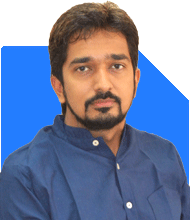Dev Ashish | Answer |Ask -Follow
MF Expert, Financial Planner - Answered on Aug 24, 2023
He provides professional fee-only investment advisory services to small and high networth individuals in order to help them achieve their financial goals.
Ashish's views are regularly published in national business publications. He has an MBA degree from NMIMS, Mumbai and also holds an engineering degree.... more

Dear Dev, I am investing in mutual funds as given below, Mirae asset emerging blue chip- 2000 sip,Mirae tax saver-1000sip, DSP tax saver-1000, DSP Mid cap fund-1500sip,NIppon small cap-1500, and 2500sip in safe gold App, Please give your advise am i investing in good option?
A few observations, for the total amount of investment being made monthly, you don't need to invest in so many schemes. 1-2 schemes are enough, of which 1 can be ELSS if you have tax-saving requirements. The other can be a flexicap fund as your existing portfolio seems to be a mix of large, mid and small-cap funds.
Note (Disclaimer) - As a SEBI RIA, I cannot comment on specific schemes/funds that are provided or asked for in the questions in the platform. And the views expressed above should not be considered professional investment advice or advertisement or otherwise. No specific product/service recommendations have been made and the answers here are for general educational purposes only. The readers are requested to take into consideration all the risk factors including their financial condition, suitability to risk-return profile and the like and take professional investment advice before investing.
You may like to see similar questions and answers below
Omkeshwar Singh | Answer |Ask -Follow
Head, Rank MF - Answered on Mar 19, 2021
Ulhas Joshi |280 Answers |Ask -Follow
Mutual Fund Expert - Answered on Jun 20, 2023
Ramalingam Kalirajan |10870 Answers |Ask -Follow
Mutual Funds, Financial Planning Expert - Answered on Apr 12, 2024
Ramalingam Kalirajan |10870 Answers |Ask -Follow
Mutual Funds, Financial Planning Expert - Answered on Aug 08, 2024
Dr Dipankar Dutta |1837 Answers |Ask -Follow
Tech Careers and Skill Development Expert - Answered on Dec 05, 2025
Dr Shyam Jamalabad |108 Answers |Ask -Follow
Dentist - Answered on Dec 05, 2025
Dr Shyam Jamalabad |108 Answers |Ask -Follow
Dentist - Answered on Dec 05, 2025
Dr Shyam Jamalabad |108 Answers |Ask -Follow
Dentist - Answered on Dec 05, 2025
Dr Dipankar Dutta |1837 Answers |Ask -Follow
Tech Careers and Skill Development Expert - Answered on Dec 05, 2025
Ulhas Joshi |280 Answers |Ask -Follow
Mutual Fund Expert - Answered on Dec 05, 2025
Dr Dipankar Dutta |1837 Answers |Ask -Follow
Tech Careers and Skill Development Expert - Answered on Dec 04, 2025
Ravi Mittal |676 Answers |Ask -Follow
Dating, Relationships Expert - Answered on Dec 04, 2025
Anu Krishna |1745 Answers |Ask -Follow
Relationships Expert, Mind Coach - Answered on Dec 04, 2025
Anu Krishna |1745 Answers |Ask -Follow
Relationships Expert, Mind Coach - Answered on Dec 04, 2025


























